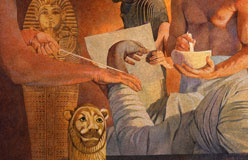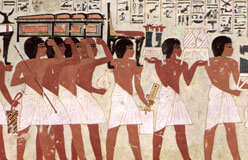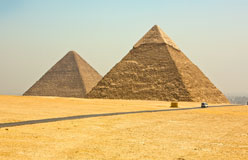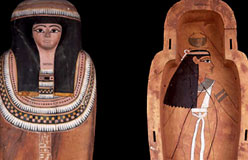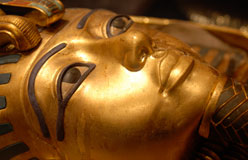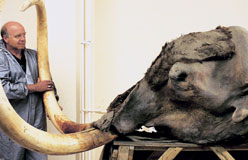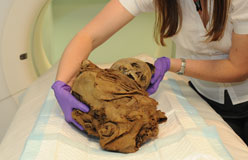Howard Carter was a British archaeologist. That’s a scientist who digs up and studies very old places and things.
Carter was interested in Egyptian kings. He spent five years digging in the Valley of the Kings. On November 26, 1922, he found a hidden tomb. It turned out to be one of the most important finds ever in archaeology. It was the sealed 3,200-year-old tomb of King Tutankhamen (also called King Tut).
First, the workers found 16 steps buried under the sand. At the bottom, they uncovered a doorway. Behind that was a passage. At the end of it was a door with the seal of Tutankhamen. As he moved into the tomb, Carter saw many amazing things. There were life-size statues, golden couches, glittering chests, animals, and “everywhere the glint of gold.”
Carter began to study the tomb of the man now known as the Golden Pharaoh. He had to work slowly. Everything had to be photographed. The area was mapped, cleaned, and documented. It would be three more years before he could open the coffins. It was almost ten years before he could look at all the statues, furniture, and shrines.

